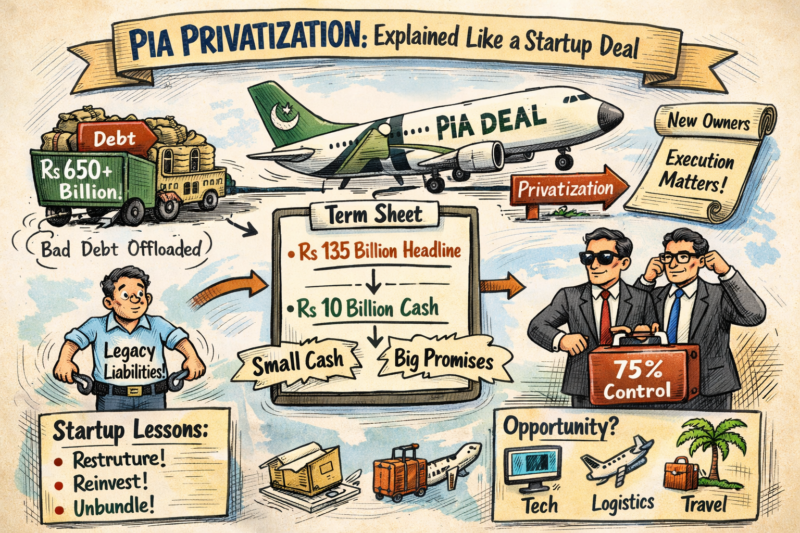How Founders Can Discover the Right Startup Idea to Build (with Real Examples)
In the whirlwind of early-stage startup life where MVPs are launched overnight and traction is the holy grail it’s easy to lose sight of the most important question a founder can ask:
“What am I really building and why will it matter?”
This isn’t a question about features, business models, or go-to-market plans. It’s a deeper inquiry about purpose, resonance, and legacy. In a world flooded with products, noise, and short-lived hype, only the startups that are rooted in clarity and impact stand the test of time.
Beyond the Product: The Real Thing You’re Building
You may think you’re building an app, a platform, a SaaS tool but those are just the visible layers. What you’re actually building is:
- A new behavior
- A new way of thinking
- A new kind of value exchange
Airbnb didn’t just build a marketplace for spare rooms—it built trust between strangers and redefined how we travel.
Notion didn’t just create another productivity tool—it gave people a canvas to think and work on their own terms.
Duolingo isn’t just teaching languages—it’s democratizing education through playful consistency and emotional design.
These companies succeeded not just because their products worked—but because what they were really building mattered at a human level.
Product-Market Fit Is Table Stakes Emotional Fit Is the Edge
Most founders chase product-market fit. And rightly so. But what separates enduring startups from functional ones is emotional resonance.
Why do users love your product? Why do they talk about it without being paid? Why do they feel something when they use it?
Robinhood simplified trading—but it succeeded early on because it made people feel empowered.
Slack wasn’t the first communication tool—but it felt like a better way to work together without friction.
You’re not just building utility. You’re creating a feeling, a habit, and a belief. Those are harder to measure but far more powerful to scale.
The Long-Term Vision: Build for the Decade, Not Just the Demo Day
Early traction is exciting. But longevity is earned by companies that play the long game.
What change are you stewarding?
If your startup disappears tomorrow, will anyone miss it?
Founders who think long-term design for systems, not just solutions. They obsess over why the world needs this company to exist in 10 years, not just how to hit KPIs next quarter.
Stripe‘s long-term vision wasn’t just online payments—it was increasing the GDP of the internet.
Figma didn’t just make design collaborative—it redefined how teams create in a browser-native world.
If your startup can’t explain what it’s really changing in the long run, you’re probably just building noise.
Founder-Market Alignment: Why You Should Be Building This
One of the most overlooked aspects of startup success is founder-market fit. Not just can you build it? but should you?
Ask yourself:
- Do you have a lived experience or deep insight others don’t?
- Are you solving a problem you care about even when no one is watching?
- Does this problem haunt you or merely interest you?
Startups are brutal. Only deep, personal alignment sustains the emotional stamina needed to endure pivots, droughts, and doubts.
Melanie Perkins spent years pitching Canva before anyone cared—because she believed that good design should be universal.
Brian Chesky kept fighting for Airbnb because he saw more than rentals—he saw connection in a disconnected world.
When you’re aligned with the mission, the mountain doesn’t feel quite so high.
So… What Are You Really Building?
Are you building software—or a shift in how people relate to something essential?
Are you chasing numbers—or nurturing a vision that deserves to exist?
Are you optimizing features—or cultivating belonging, trust, and change?
The founders who win are those who build for more than just acquisition. They build with intention, with clarity, and with conviction.
The next unicorn won’t be just a better app. It will be the company that dares to matter.
So ask yourself again: What are you really building and why will it matter?
FAQ
A: Start by identifying a personal pain point or problem you’ve experienced. Then ask, “Why does solving this matter to others—and to me?” Tools like customer interviews and clarity prompts can help define your real mission.
A: If your product resonates emotionally, solves a persistent problem, and aligns with your long-term vision, it likely matters. Ask yourself: Would anyone miss this if it disappeared tomorrow?
A: That’s okay—many startups begin with a single feature. Use it as a wedge to explore the broader impact. The goal is to evolve that feature into a mission-driven product that creates lasting value.




